Homemade Wooden Keg Fridge (Part 2)
In part 1 I built a keg fridge that was woefully underpowered. After learning that the only practical way to get enough cooling is to use a compressor-based system, I've decided to retrofit one into my fridge.
Take 2
I found a mini fridge on craigslist. It was pretty small and basically brand new. Hayden and I carefully dismantled it. Well, I was careful. He just wielded the sawzall and got ‘er done. We managed to get the entire refrigeration loop separated from the sheet metal and glue and sprayfoam. These kinds of fridges are really not meant to be dismantled.

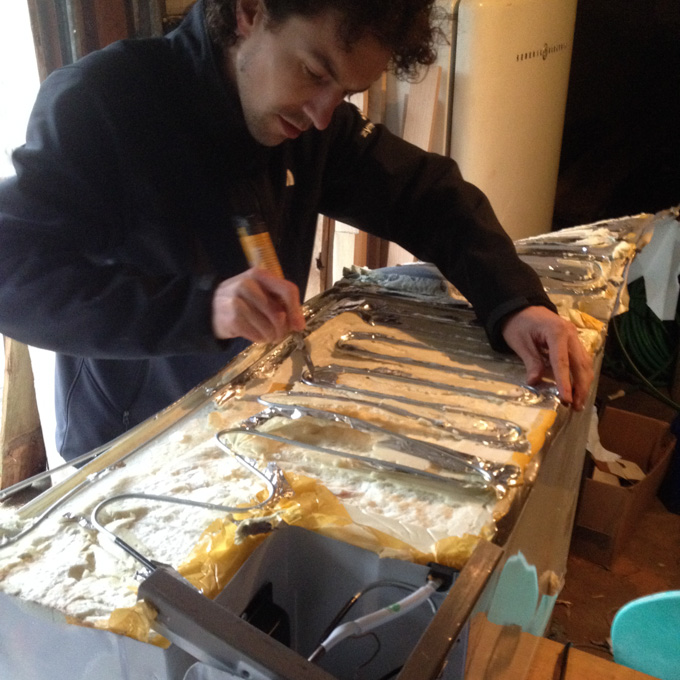



With the refrigeration system removed, I set out to retrofit it into my insulated cabinet. There was a rather large hole where the peltier assembly was supposed to go, but it wasn’t in the right spot to feed the evaporator coil in, so I plugged it with an off-cut of wood, and jigsawed out a new opening for the evaporator to fit in. The condensor (hot) coil was pretty unwieldly. It was designed to snake throughout the minifridge’s back and side walls, so I had to re-bend it into a planar configuration and tack it to the back of my cabinet with some standoffs so it didn’t rest agains the wood. This was such delicate work - one kink and the loop would be ruined - or one puncture and the refrigerant gas would escape. I used a tin can to ensure the bend radius was sufficiently large.
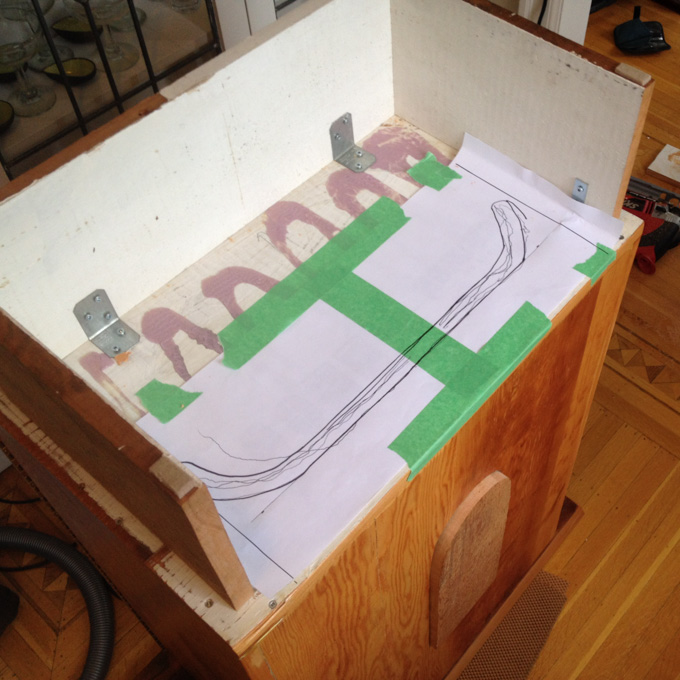

I also had to raise the entire cabinet up to make room for the compressor. This was pretty easy, and actually resulted in a better overall height for the top of the cabinet. Did you know that 42” is the ideal height for a bar? It’s the height at which a typical person can lean on it comfortably.
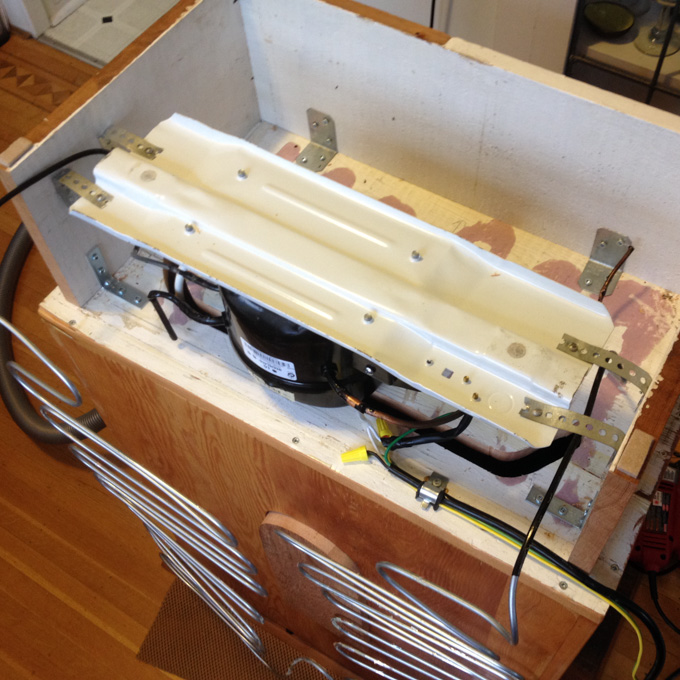

Kegs & Taps
I have two ball-lock corny kegs that I got off craigslist, and I bought the couplers off ebay. I already had a co2 cylinder and regulator from my carbonated water experiments.
I really lucked out in finding a beautiful tap tower on craigslist. It had been sitting ornamentally in someone’s home for years, but it appears it had been removed from a pub by clipping the tubes and not even cleaning them out. It had decades-old crud and I basically took it apart into a hundred pieces, cleaned them with PBW, and rebuilt it.


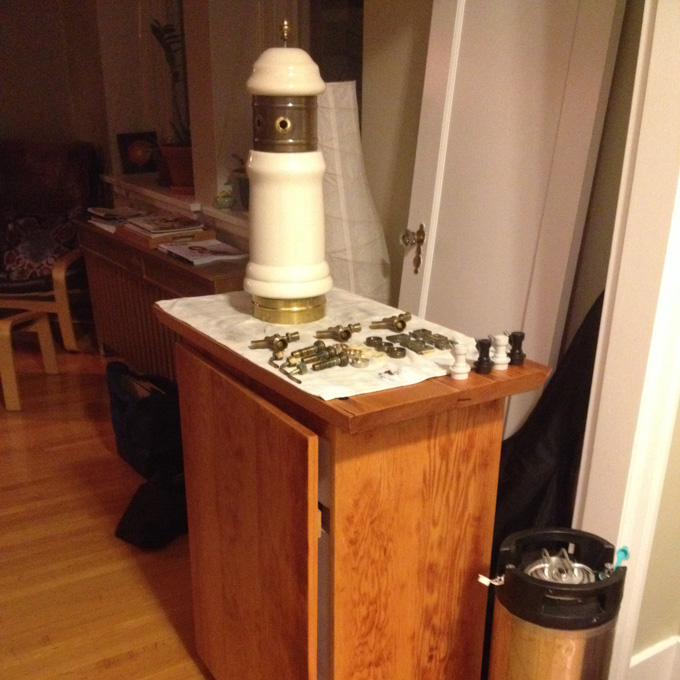


Controller
The compressor is controlled by an ESP8266 that switches a relay. It has temperature sensors inside as well as on the compressor itself, and software to run it as consistently as possible to achieve the desired temperature, but more conservatively that a normal fridge. Since this thing is made from wood, I try to minimize excessive temperature swings. All the temperature data is sent to the same logging infrastructure as the cidery, because why not.


Job Done
At last, it is functional! Water and beer come out of the tap at 3-4°C.

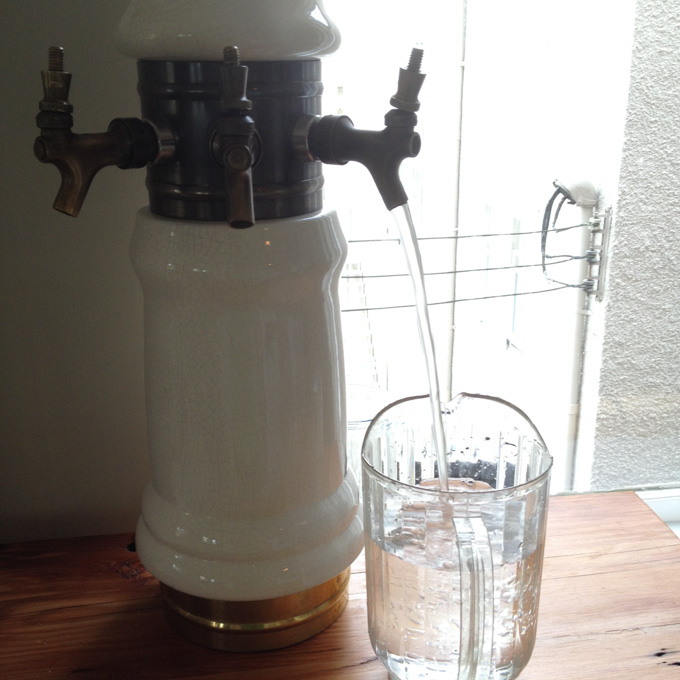
Update - 1 Year Later
The fridge has been in operation for over a year now. One keg always has carbonated water. In the other we’ve had a variety of homemade beer, cider, the leftover beer from our wedding, and once Michelle decided to buy a bunch of cheap boxed wine and carbonate it — that worked out pretty well actually!
It took six months and a couple tries, but in the end this project was a home run success!

